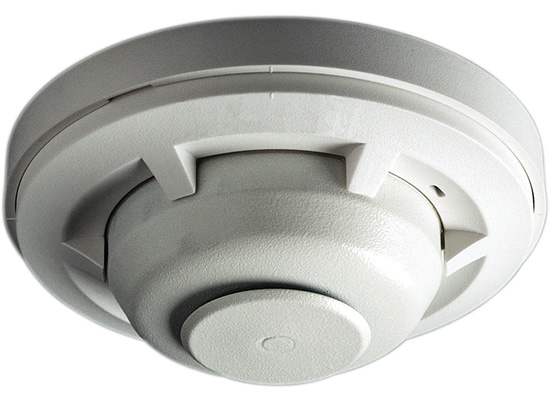Heat Detector
Intelligent, Sensitive and Industrial GradeSet to alarm when ambient temperatures reach a fixed point, typically indicating a fire, fixed-temperature heat detectors are a highly cost-effective solution for many property protection applications.
If rapid response to fire is vital, rate-of-rise heat detectors are an ideal solution where rapid temperature increases would only be caused by a fire emergency.
Combination heat detectors provide both fixed and rate-of-rise detection. This enables the heat detector to communicate an alarm to the central control panel prior to reaching its fixed set point for high rates of rise, providing a timely response to both rapid and slow temperature increases.

These are available in full-line of configurations to accommodate a broad range of applications. Both single- and dual-circuit models are available for low- and high temperature ratings with either fixed temperature or combination fixed temperature/rate-of-rise (ROR) activation. The ROR element of the fixed/ROR models is restorable to accommodate field-testing.
To satisfy a variety of installation needs, they mount to single-gang and octagonal back boxes. And these models accommodate back boxes, when used with a square to round plaster ring. The reversible mounting bracket permits both flush- and surface-mount back box installations.
Visual identification. They provides clear markings on the exterior of the unit to ensure that the proper detector is being used. Alphanumeric characters identify the activation method, as well as the temperature rating, in Fahrenheit and Celsius degrees. Fixed temperature models are identified FX, while combination fixed/ rate-of-rise units are marked FX/ROR.
The Conventional Heat Detector also provides a post-activation indicator in the form of a collector. When the detector is activated, the collector drops from the unit, making it easy to identify the unit in alarm.




